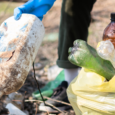Chances are you’ve already read the articles online saying that there’s an elephant named Maali in Manila Zoo that needs to be freed, or in a more accurate term, transferred to an accordingly better facility in Thailand.
You might have signed up the petition, too, that aims to support Maali’s relocation due to, as I quote, “Mali has been denied proper veterinary care. In the entire time she has been at the zoo, she has never received proper preventative foot care—something every reputable zoo in the world provides—or even basic blood work.”
However, is it possible that these stories are not as accurate as they sound?
Here’s a different side of the story from the actual people who are taking care of Maali. On Isa Garchitorena’s post, she addressed the issues being thrown to Maali’s condition and the management of Manila Zoo based on her first-hand experience and knowledge about the situation. Read more below.
Dear friends here in Manila and abroad
In the last couple of days, the same old PeTA campaign has been making the rounds again on Facebook – showing Manila Zoo’s 42(?) year old elephant as the loneliest elephant, so sad that she is comforting herself by holding her tail. Sad sad, right? Then you click on the link and it talks about the poor life Maali has at the zoo.
First, the facts, the elephant holding it’s tail is NOT Maali, it’s a photo of an elephant at a Russian zoo from forever ago – and PeTA knows this of course, but it’s a photo combined with a story designed to tug at your heart strings! So you, animal lover that you are click the link, sign the petition and show your support for the idea of transferring Maali to another country.
Let me tell you my personal Maali story.
Tammie and I moved to Manila in March of 2012 after spending 12 years in the US and Canada training animals. We both have degrees in Exotic Animal Training and Management from Moorpark College. I worked in the movie industry in California, training dogs, cats, wolves, lemurs, capuchins, porcupines, eagles, hawks – the works! And Tam worked at the LA zoo with tigers, sea lions, koalas, wallabies and more. Then we moved to Canada and began working at the BC Wildlife Park working with bears, wolves, moose, bison, cougars, raised some lion cubs and trained a whole schwack of free flight birds. To date, that’s 17 years of training, training and training all sorts of animals. But enough about us.
In June of 2012, I happened upon a news broadcast the PeTA was involved in protests trying to convince the city of Manila government to turn over Maali to them to be transported to a “sanctuary” in Thailand. That very evening, through manila’s social network got in touch with the Manila zoo vet in charge and sent some texts and emails expressing our support for the Manila Zoo. We sent our resumes and asked if we could help. Luckily for us, they agreed.
PeTAs concerns were many, Maali was lonely, her enclosure was barren and concrete, her nails were untrimmed, she was unhealthy …and on and on and on.
When we met Maali, it was on the company of Dr. Manalastas and Dr Chip, Zoo vets, Noel and Boy, her keepers, and John, a volunteer for 12 years who had an amazing relationship with Maali. Maali was loved!
We talked about starting a training program to start working on PeTAs main concern – foot care, we came up with a plan, made some arrangements for modification of a training area where we could work with her in a protected setting.
We started coming in two days a week, from Lipa Batangas to Manila Zoo. A two to three hour drive in rush hour traffic to get to the zoo in time for Maali’s breakfast at about 9am. Two days a week was not the idea training schedule, but it was what we could do.
At first training was simple, teach Maali a bridge. A bridge is usually a whistle or a clicker (we used a whistle) or even a simple word like “good” that bridges the gap in time between the correct behavior and the arrival of the food. Imagine you’re training your dog, you say “sit” hold your hand up, finger pointing at his nose, his nose follows your finger up, his bum touches the ground and you say “good!” Then give him a treat. You just used GOOD as a bridge. So again, the first days were simple, we would find a safe spot where we could feed her then blow a short quick blast on a whistle, PEEP! Then feed. PEEP! Then feed. Rinse and repeat.
She’s a smart elephant, she learns quickly. Next we asked her to start coming to a permanent training area, she on one side of a fence, and we on the other. She had to learn to present different parts of her body so we could touch it and get her to move into position for training.
Plans changed, foot care became a lower priority and blood extraction became top priority. PeTa was pressuring the city government, the bureau of animal industry and the DENR to provide blood so they could PROVE that Maali was a sick, unhealthy elephant.
To do this, we asked Maali to position herself alongside the fence, raise up her trunk, open her mouth to be fed. Then we raised the criteria, do all of the above, and then flap your ear through the bars so we can touch it. This training took months. Remember, two days a week, for 10-15 minutes per day. Finally, we got her to hold her ear steady, long enough to draw blood. It was hit or miss sometimes – the vein we use for blood collection is behind her ear, it’s a huge vein, you can’t miss it – and yet we did! We would get in the vein but there would be no blood – an elephants heart beats about 30 times a minute, compared to a human’s heart rate of 60-100 beats per minute – so it was a question of timing it right and then the blood would rush into the syringe.
Blood collected, packed in a cooler and rushed to a local vet clinic. Results? Maali was a healthy elephant! Slightly over weight but all her values were consistent with an elephant her age. Dr. Thongtip, an elephant vet from Thailand reviewed her blood results and declared her in the pink of health, he looked at her feet and her cuticles and said they were not bad, that he had seen much worse. They were not causing any foot pain whatsoever, but perhaps a slight diet modification was in order to slim her down a bit.
Now, let’s talk about PeTAs concerns. Maali was a single elephant and she was lonely.
My response. Maali is a single elephant, that is fact. She was not always a single elephant, apparently she used to have an elephant companion that bullied her mercilessly. Maali is lonely? Maali’s keepers spend many hours of the day with her, feeding her, bathing her, scrubbing her skin. They bring grass, fruits, vegetable, sand for bathing in, they see to her every need. Then there’s John, a volunteer and Maali’s best friend. He has the most amazing relationship with Maali! He can do anything with her. He goes in with her, free contact, no bull hook. He can look into her mouth, ask her to lay down, lift her feet, he bathes her, rubs her down, brushes off any dirt and sand in the cracks and crevices of her elephant skin. He buys her popsicles from the roving vendors and shares it with her. He has had thousands of zoo patrons feed Maali from across the moat, sharing with them the most amazing experience. Imagine a kid from public school, getting the chance to hand an elephant a banana, she takes it gently with her trunk and kid’s eyes just light up! It’s the most amazing experience to witness.
Maali lives in a barren concrete encloure. Yes, yes she does. The Manila zoo doesn’t have a lot of funding. When we started getting involved, local residents paid 20 pesos and non residents paid 40 pesos. Any money collected does not funnel right back to the zoo but is pooled into the general Parks fund and then gets doled out. Her enclosure has two areas, the old section and the new section complete with waterfall and pool. Her keepers bring in sand to help her “bathe” (think dust bath) and the keepers also provide enrichment, spreading out her food for foraging, placing treats in a plastic water just suspended high above, so she has to bat it with her trunk to get out her treats. Fruits frozen in ice blocks for sweltering hot days.
Maali would be better off in a sanctuary in Thailand, PeTA says. She would be free to roam and learn to be with other elephants.
Here’s what I have said to the many children we spoke to while working with Maali. Maali is old, she is in her 40s, and the median age for captive elephants is about 42, so she’s a super senior citizen. Pretend Maali is your 90 year old Lola, and you have the opportunity to migrate to another country, will you bring your Lola? The pros are clear, better health care, less pollution, better overall quality of life, and the cons? Different environment, she would have to leave the house she has lived in for decades, say good bye to her routine, to her friends, maybe her mahjong group, she would have to learn a whole new culture, a whole new language. What would you think Lola would choose?
Those are the issues surrounding Maali’s transfer to a sanctuary in Thailand. She would leave her home of 42 years, be loaded in a container, flown to another country, endure a 3-6 month quarantine before she is introduced to another elephant. She may or may not fit in with other elephants, she may not act like an elephant should, she may have poor elephant social skills from being alone for so long. Maali is not a Thai elephant, she is a Sri Lankan elephant, which is a different subspecies of elephant. Will she be happy? Will they all get along? Will she miss her home? There’s no way to really know – and at that point it will be too late.
Maali may not be housed with other elephants here but she is not without family. Her family is her keepers, her vets, her beloved volunteer and the millions of Filipino children that have watched her grow into the Maali that she is today.
PeTA has collected millions of pesos using Maali as their fundraising poster child and not one cent has gone to help give Maali a better life. If PeTA really cared about her quality of life, why don’t we start now? Why is their help contingent on moving Maali? If they cared about her like they want you to believe they would be helping her already – not using her for fundraising.
On a Facebook post by Debbie Sablada, she shared the side of Mr. John Chua, a volunteer caretaker of Mali for the past fourteen years.
I am John Chua… volunteer caretaker of Maali for 14 years and counting..
Here are the facts:
Maali is 48 years old… in 2012 she was declared sick and dying by the late American vet who went ahead of Maali. I have gone to Office of the President and even Batasan to defend why she must stay. There is a 4 inch thick of the Quarantine Law of the Royal Government of Thailand regarding importation of elephant.. specially from TB affected countries like the Philippines. They will not accept Maali to protect their elephant population from possible virus that Maali might bring in.
I am like you wants the best for Maali. World expert elephant behavior specialist Gail Laule suggest the best for Maali is to live to her old age in where she consider home and among her friends. She is able to communicate and relate to humans.
So … I dare you. Come and join us. Let’s make her life as happy as possible… for the other side. They have been fundraising since 2008… there target is roughly $35 million dollars… wow. That’s a lot of money for just an old elephant… and you are spending your hard earned money to their coffers.
Sign whatever you want.. petition… don’t just join the Bandwagon… go fight it out..
On a separate post, Mr. Chua said that Maali was not the elephant on the viral video. He mentioned, “This is what they are showing in the video… a young elephant at a Russian zoo with 2 other elephants. Notice the similar water tank at the back and the wires in front.. This is not Maali.”.
He also said, “They [PeTA] need $35 million to cover the transfer of Mali to Thailand and they have been doing this since 2008. They have to get 80% of that to cover their campaign and other expenses. Oh, by the way… the Boon Lotts Sanctuary that supposed to take care of Maali. They need your Donation too. While they want Maali to boost their business, the strict Quarantine Law of the Royal Government of Thailand forbids importation of elephants from TB affected countries. like the Philippines.”
Another post by Mr. Deano Reyes also pointed out that Maali is in good condition and how the relocation would actually cause more trouble for the elephant’s well-being. Read his post below.
I actually have a friend who is a vet that closely works with Manila Zoo who has told me that this article is ABSOLUTE BULLSHIT!
First of all, the elephant’s name is spelled MAALI. So, right off the bat, this article is obviously not researched well enough.
The reality of the situation is that Maali has been checked by one of the leading experts in Elephants due to PeTA and animals rights activist and all. That doctor said that Maali is doing great except that she’s a tad bit overweight. Also, she is very attached to her keeper.
Maali also has a history of being bullied by other elephants. Her mom died in the wild and so she was transported here as a calf.
You know what else? That photo of the elephant holding it’s own tail? That’s not Maali. That’s a MALE elephant from a ZOO IN MOSCOW, and that elephant has other elephants with him in his enclosure.
Furthermore, there are strict international laws when it comes to transporting animals to other countries. For example, we’re banned from transporting animals here to Australia. In Thailand, they don’t like animals coming in from countries with histories of TB, rabies, etc. So, how will that work if Maali fails the qualifications? Will she just be transported back? Will PeTA shoulder the cost? Or will they push for Maali to be “mercifully euthanized”?
Let’s say that Maali magically passes those qualifications, her keeper actually needs to travel with her. According to the doctor who checked on her, Maali might get super depressed if separated from her keeper. She’s also old, and the trip itself might actually kill her.
Yes, it is true that elephants are herd animals but that also means she might treat other people as a part of her “herd”. Another background story about Maali is that the zoo had to get her used to the feeling of SOIL, because she didn’t like to get dirty.
Manila Zoo is really trying, but a lot of its funds actually just go to the pockets of corrupt officials. Many of the animals in Manila Zoo are exotic rescues, some with even pending cases.
Manila Zoo is far from perfect and it has been going decrepit due to lack of funds, which lowers their visitor rate which makes them even more troubled with finances. The Zoo is desperately trying to survive just for the animals. There are even some inside news that a certain giant-sized company in the Philippines is eyeing the 5.5 hectares of land to turn it into a Hypermart. What will happen to all those animals then?
The best way to help Maali is to volunteer or donate IN KIND at Manila Zoo. Clickbait articles like these are misleading and are serving the agenda of certain organizations hiding under the guise of animal rights and animal welfare while they actually just line their own pockets.
On the other hand, PeTA denied that they are associated with the photo of the elephant holding his/her tail. They clarified that they never used this photo in any of their campaigns related to Maali. They also made clear that PeTA has never collected million of pesos from their “Free Mali” campaign and mentioned that PeTA actually flew in an elephant veterinarian to inspect and check Maali’s condition. Read PeTA’s official statement here.
Here’s a real photo of Maali, for everyone’s reference. The picture was taken by G-nie Arambulo.
This debate and discussion about Maali between PeTA and Manila Zoo has been going on since 2008. Even the authorities asked both parties to work together for the benefit of Maali. The caretakers of Maali agreed to this while PeTa said that they will support Maali once her relocation has been approved.
As to which side you must support, it is still upon you. However, please keep in mind to think before you click. Or else, you might be supporting a cause that will do more harm than good.
What are your thoughts on this? Tell us in the comments.




